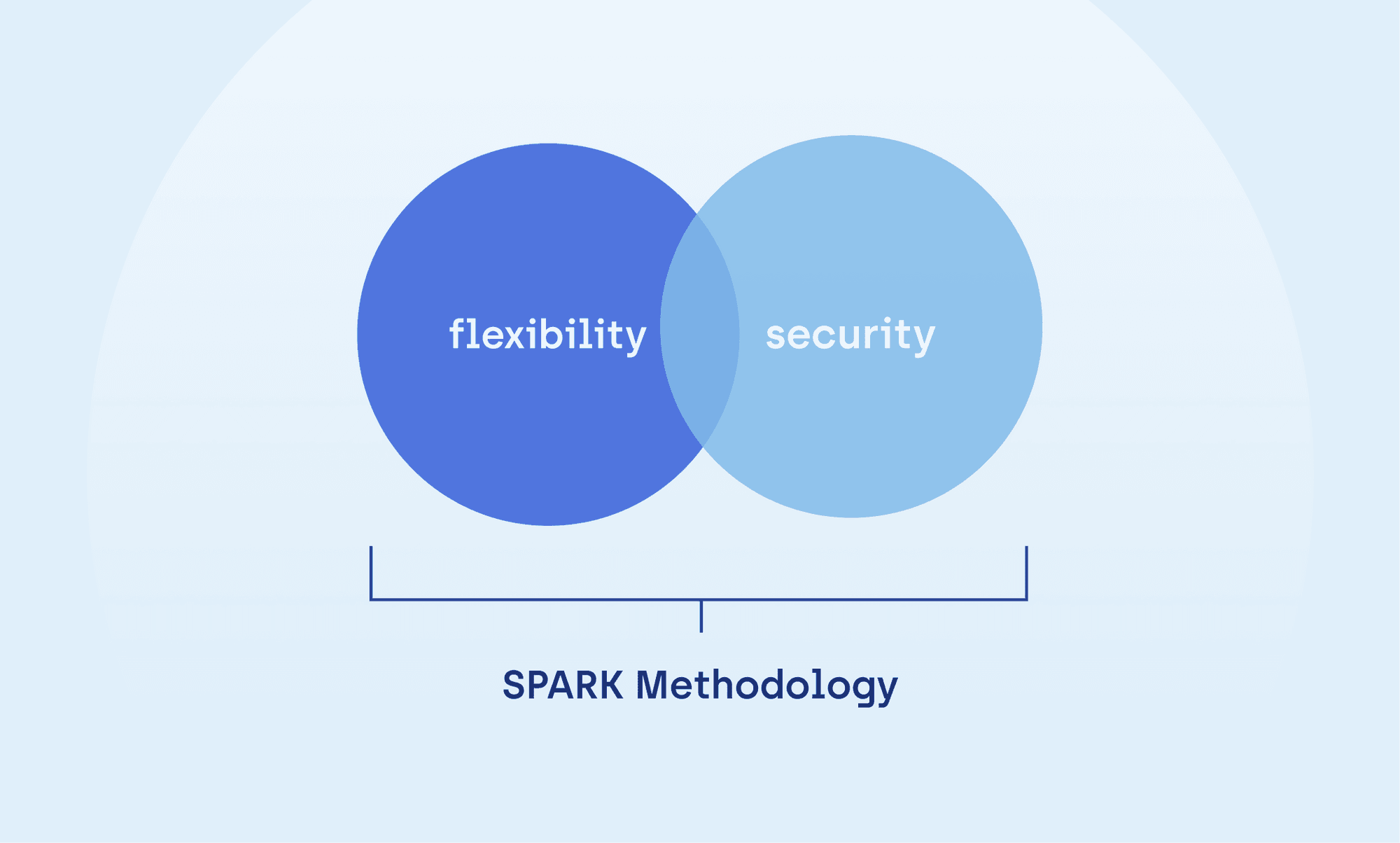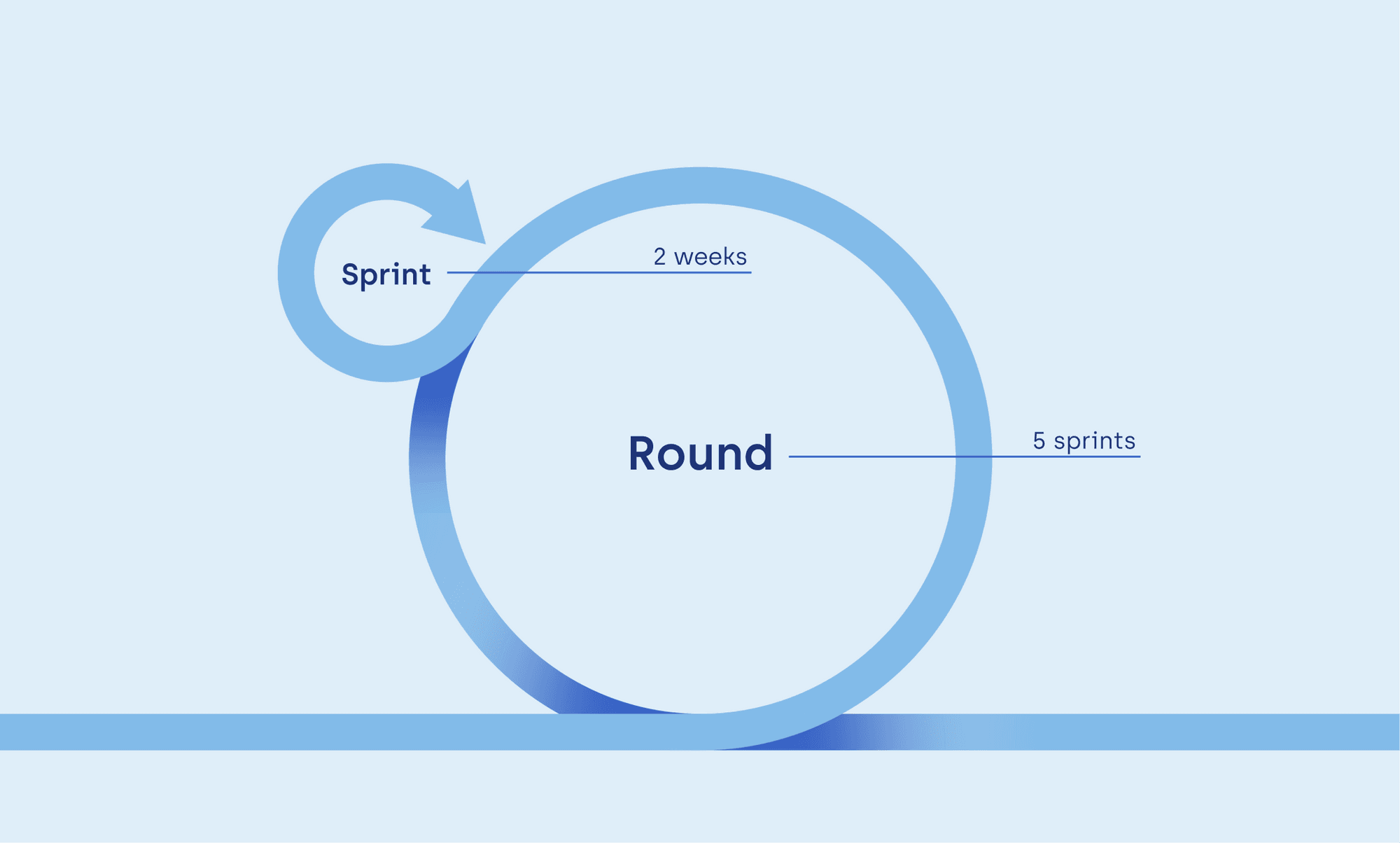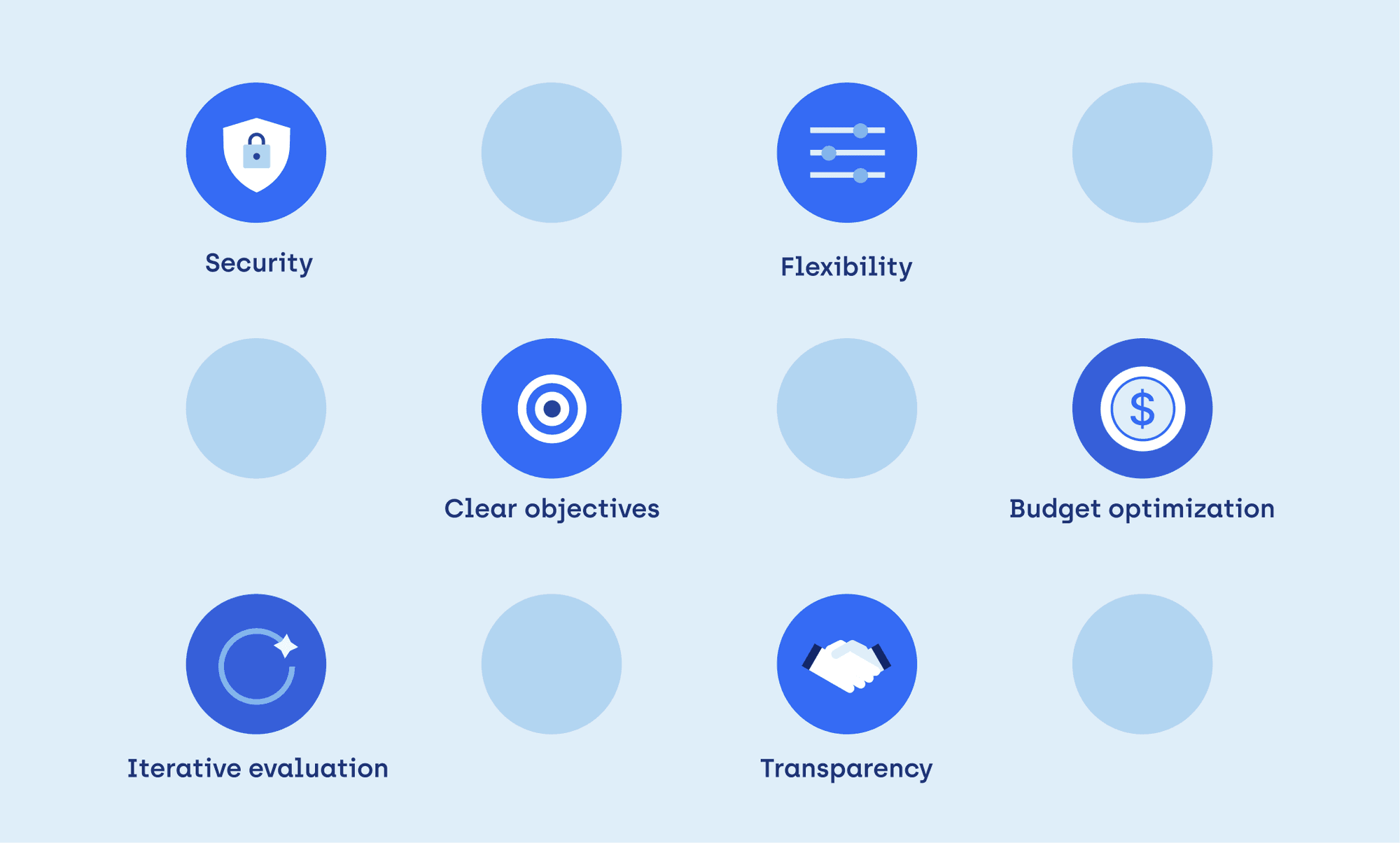An Introduction to SPARK Methodology. Discover a Hybrid Project Management Framework That Blends Flexibility And Security.

Tomasz Franczak

Navigating the vast landscape of project management methodologies can be a challenging task. From agile to waterfall, each model has their own advantages and limitations to consider. However, what if there was a way to leverage the strengths of multiple approaches and combine them into one methodology?
Discover SPARK, an agile-waterfall hybrid model that manages to strike a perfect balance between flexibility and security. In this article, we will delve deep into the principles of this approach, explore the round-based general process, and reveal how SPARK can help you thrive in an ever-changing business landscape.
Meet SPARK – A Hybrid Project Management Approach
SPARK is a hybrid project management methodology that seamlessly combines the flexibility of agile methodology with the security of waterfall. It's a comprehensive set of principles that encompasses various operational activities, spanning from project discovery to final delivery. Unlike rigid methodologies, SPARK directs project managers and their teams towards specific goals without compromising adaptability. You can think of it as a guiding force, ensuring that you remain focused on the objective without straying too far from the designated path.
Best Of Both Worlds
In essence, SPARK is a powerful tool that leverages the strengths of agile methodologies while incorporating the stability of waterfall project management.
This hybrid approach fosters productive, agile practices, like efficient collaboration, iterative development, and continuous improvement throughout the entire project lifecycle. At the same time, SPARK retains a sense of security associated with waterfall's pricing model, fixed cost. By accurately estimating the final cost based on historical data and expert judgement, it enables informed financial planning and effective resource allocation.

How Does It Work?
Phase 1: SPARK Discovery
We kick off the project by conducting a comprehensive pre-implementation analysis. The goal is to validate the client's idea and translate it into a viable solution. This crucial project phase includes identifying functional requirements, uncovering potential risks, and providing a reliable project estimation.
The two principles of SPARK methodology, flexibility and security, converge during pre-implementation analysis. The entire process is designed to facilitate adaptability, ingenuity, and refinement to the initial idea. Meanwhile, the final product, a pre-implementation analysis report, defines project objectives and specifications in a structured way, guaranteeing a seamless and streamlined implementation.
Phase 2: SPARK Development
Sprints
In the traditional model for agile project management, the software development process is broken down into sprints – 2-week iterative work cycles. Similarly, SPARK incorporates the practice of sprint planning into its principles. A project manager selects a set of items from the product backlog, which are broken down into smaller tasks. Then, developers, designers, business analysts, and QA experts commit to deliver their assignments till the end of the sprint.
Rounds
However, the SPARK framework excels at detailed planning by combining agile sprints with our own concept of rounds. A round consists of 5 standard development sprints, rounding up to 10 weeks. At the end of each round, a project manager checks the underlying assumption and, if needed, makes necessary adjustments based on the team's performance and measured KPIs.

75% Minimum Declared Scope
Unlike other methodologies, our hybrid method guarantees that minimum 75% of the scope for the first round will be delivered to the client. Of course, this number may increase over the span of subsequent rounds due to acquired confidence and momentum that positively affects the deliverability factor.
For example, let's imagine that after two successful sprints, the development team stumbles due to unexpected roadblocks and delivers only 60% of the scope. Then the project manager knows exactly how much they need to make up during the 4th and 5th sprint. The fact that the 75% minimum declared scope refers to a round, and not a sprint, allows for tweaks and adjustment in the project planning, even in the face of a worst case scenario. Consequently, we always set the bar as high as reasonably possible to ensure a safe buffer.
Phase 3: SPARK Delivery
Through iterative development in sprints and rounds, we finally arrive at the last of the project phases. Once the software has been thoroughly tested and approved, it is ready for deployment. Our team carefully coordinates the transition into the production environment, ensuring a smooth release. Note that IT support and maintenance are not part of the SPARK methodology because they are addressed after the last round has been finished.
Why Blend Project Management Methodologies Into One?
Each of the project management methodologies comes with a unique set of advantages and limitations. By combining agile and waterfall into a hybrid approach, we can leverage their strengths and multiply the benefits. Here are some key advantages of SPARK methodology:
- Security: Retain a sense of safety and predictability related to waterfall project management. Through a meticulous pre-implementation analysis, we establish an accurate budget estimation, ensuring no unforeseen charges arise.
- Flexibility: Working in iterative cycles is a staple of agile methodology. Extending beyond traditional sprints allows for greater adaptability to changing conditions while still delivering the declared scope at the end of each round.
- Clear objectives: During the SPARK Discovery stage, we define project Key Performance Indicators (KPIs) and scope with utmost precision. Our hybrid approach guarantees timely and budget-compliant delivery of the intended outcome, all while maintaining a high degree of flexibility.
- Budget optimization: With SPARK, you retain total control over your budget. As the project progresses, we actively seize emerging opportunities and suggest new solutions to optimise your resource allocation and stretch your budget even further.
- Iterative evaluation: We recognize that client needs evolve with the project. SPARK emphasises that the final product should therefore align with current requirements rather than solely relying on initial ones. After each round, project managers evaluate the team's performance and proactively seek opportunities for improvement.
- Transparency: From regular reports, to systematic risk evaluation, and asking for stakeholder feedback, SPARK fosters transparency. The round-based cycle facilitates honest and open communication, ensuring everyone involved is informed throughout the process.

HFNGG: A Case Study in Hybrid Project Management
HFNGG has teamed up with hero/dot to develop Gamin.gg, an automated play-to-earn gaming platform. The project was innovative and ambitious, which prompted us to slightly diverge from traditional methods of SPARK project management. At Gamin.gg, a round consisted of 2 developer sprints so that we could have an evaluation meeting every 4 weeks rather than 10. We also set the bar even higher with 85% deliverability.
After all the features from the project scope were arranged into rounds in logical order by the project manager, we started the development of HFNGG's platform. However, after a business analyst reevaluated the initial assumptions, we found ourselves in need of rearranging priorities right before the 3rd round. This led to some major adjustments in scopes of following rounds. Hero/dot completed the work on MVP1 within 12 months, ensuring a successful launch with over 500 new users registering in the first 2 weeks.
Through the use of SPARK and by leveraging the strengths of agile and waterfall methodologies, we delivered the finished product:
- in the assumed time frame;
- within the budget;
- and in a final form that matched the original requirements in at least 75%.
In Conclusion
In the span of this short article, we hope to have demonstrated that SPARK proves to be a powerful hybrid methodology. By seamlessly integrating the strengths of agile and waterfall approaches, it manages to blend flexibility and security. With successful case studies, like HFNGG's gaming platform, SPARK offers a comprehensive and versatile framework for effective project delivery that meets or exceeds initial requirements.
If you're searching for a project management methodology that provides the best of both worlds, you've come to the right place. Contact us today to discuss how SPARK can best suit your individual needs, budget and estimated deadline. Let's make it happen!
You may also like:
- Managing Risks in Software Development Projects – A Guide to Risk Analysis
- Pre-implementation Analysis Done the Hero/dot Way – Build Your Vision of a System Without Code
- Waterfall vs Agile Methodologies: What Are the Differences and Which One Should You Use?
- Software Project Estimation – From Beginner to Intermediate in 10 Minutes
- Request for Proposal (RFP) Explained – Find the Winning Bidder for Your Custom Software Development Project
- The Ultimate Guide to Software Estimation Techniques – Pros, Cons & Strategies for Choosing the Right One
Need expert assistance with your digital project?
